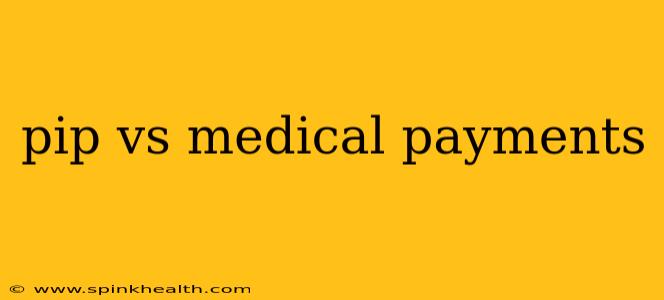Car accidents are unfortunately a part of life, and when they happen, understanding your insurance coverage is crucial. Two common coverages often cause confusion: Personal Injury Protection (PIP) and Medical Payments (MedPay). While both cover medical bills after a car accident, they differ significantly in how they work and who they cover. Let's unravel the mystery surrounding PIP vs. MedPay, using a storytelling approach to make it easier to understand.
Imagine Sarah, a young professional, recently involved in a fender bender. She's shaken but thankfully only suffered minor injuries. Her insurance policy includes both PIP and MedPay. Which coverage will help her? That depends on the specifics of each coverage and the circumstances of the accident.
What is Personal Injury Protection (PIP)?
PIP coverage is like a safety net for you and your passengers, regardless of who caused the accident. It covers medical expenses, lost wages, and even funeral expenses in the event of a death. Think of PIP as a first-responder to your medical needs after an accident, providing immediate financial aid. Sarah's PIP coverage, for example, would pay for her medical bills, even if she was at fault for the accident. This is a significant advantage!
How Does PIP Work?
PIP is a "no-fault" coverage, meaning it pays for your medical bills and other expenses regardless of who caused the accident. However, there are limits. Your policy will specify a maximum amount your PIP will cover, and you'll usually need to meet your deductible before the coverage kicks in.
What is Medical Payments (MedPay)?
MedPay, on the other hand, is more focused on immediate medical expenses. It's designed to pay for medical bills for you and your passengers, but only if you are injured in an accident you weren't at fault for. Think of MedPay as a smaller, more targeted first aid kit compared to PIP's comprehensive medical bag. If Sarah was deemed not at fault, her MedPay coverage could help cover her medical bills.
How Does MedPay Work?
Unlike PIP, MedPay is not a "no-fault" coverage. It only pays if you're not at fault. Also, MedPay generally doesn't cover lost wages or other expenses beyond medical bills. Once the MedPay benefits are exhausted, you might need to pursue compensation from the at-fault driver’s insurance company or through other means.
PIP vs. MedPay: Key Differences Summarized
| Feature | PIP | MedPay |
|---|---|---|
| Fault | No-fault coverage | At-fault coverage only |
| Coverage | Medical bills, lost wages, funeral | Medical bills only |
| Who it covers | You, your passengers, sometimes others | You and your passengers |
| Limits | Usually higher coverage limits | Usually lower coverage limits |
Which is Better: PIP or MedPay?
There's no single "better" coverage; it depends on your individual needs and risk tolerance. PIP offers broader, more comprehensive protection, even if you are at fault. MedPay is a less expensive option, but it offers significantly less protection. Many states require PIP coverage, while MedPay is optional.
What if I have both PIP and MedPay?
Having both PIP and MedPay offers a layered approach to accident-related medical expenses. Your insurer will likely prioritize PIP, exhausting its benefits before resorting to MedPay.
How much PIP and MedPay coverage should I get?
The amount of PIP and MedPay coverage you should purchase depends on your individual circumstances, including your financial situation and your risk tolerance. Consult with an insurance professional to determine the best coverage levels for your specific needs.
This comparison sheds light on the crucial differences between PIP and MedPay. Remember, understanding your car insurance coverage is paramount to protecting yourself and your loved ones financially in the event of an accident. Always read your policy carefully, and don’t hesitate to ask your insurance provider for clarification if needed.

